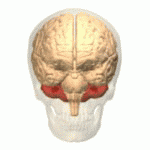Cerebral Palsy, Ataxic, Autosomal Recessive

Description
Cerebral palsy (CP) is defined as a nonprogressive but not unchanging disorder of posture or movement, caused by an abnormality of the brain and first evident at the stage of rapid brain development (Hughes and Newton, 1992). It is a common disorder of childhood, with an incidence of 1 in 250 to 1,000 births (Pharoah et al., 1987; Bundey and Alam, 1993). Ataxic cerebral palsy accounts for 5 to 10% of all forms of CP, and approximately 50% of ataxic CP is thought to be inherited as an autosomal recessive trait (McHale et al., 2000). Also see spastic cerebral palsy (603513).
Clinical FeaturesMcHale et al. (2000) identified a complex consanguineous Asian pedigree with 4 children in 2 sibships affected with ataxic CP. Three of the children had simple ataxic CP and 1 child had ataxic diplegic CP. All 4 children were considered to be of normal intelligence and attended mainstream schools. Cerebellar dysfunction was reflected by dysarthria, dysdiadochokinesis, horizontal nystagmus, and broad-based gait.
MappingBy homozygosity mapping, McHale et al. (2000) demonstrated linkage of ataxic CP to chromosome 9p12-q12 in a consanguineous Asian family. Using multipoint analysis, they obtained a maximum lod score of 3.4 between markers D9S50 and D9S167, a region of approximately 23 cM.